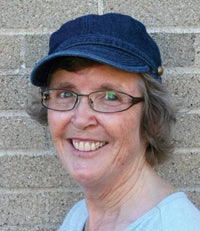Bees and butterflies fascinate to this day
Published 9:19 am Wednesday, May 1, 2013
Column: Creative Connections, by Sara Aeikens
Each year I attempt to transform our corner lot of predominantly green grass into an expanding flower garden. The roots of this idea developed when the daisies began to spill over the red brick borders by the front steps and increasingly crept along sidewalk edges to our Vine Avenue entrance. However, origins of this plant germinated in Minot, N.D., where nature became an integral part of my childhood.
Crawly creatures surrounded all edges of my hometown backyard because my parents planted all four sides of the lawn with flower and vegetable gardens. The abundance of both bees and butterflies gave our family of five a chance to become acquainted with nature’s sweet food of honey as well as life cycles of caterpillars wrapping themselves in cocoons and emerging as butterflies.
At home, our father lived his work as a college biology teacher by caring for his stacks of beehives. He tended the actual hives kitty-corner from our place on an empty lot a neighbor loaned him. We kids tagged along with him to watch the bees at work. Now and then someone got stung on these trips. Usually it happened when Dad licked off the metal tool he used for various tasks in moving the all-white beehive boxes around.
Of course, he never checked to notice the bee on the bottom side of the flat tool waiting with his stinger aimed at the underside of his tongue. I don’t recall receiving even one bee sting.
We spent our time learning what large queen bees looked like and how hard the smaller drones strived to bring nectar to the hives. Sometimes the bees would swarm in a neighbor’s tree and our old-fashioned black phone would ring with a request for Dad to rescue a tightly knit batch of bees as a favor for our neighbors. We owned about a half-dozen various sized ladders to aid in climbing close to branches where the swarm had found a new home. He seemed to always get the swarms back to their beehives.
The best times came when he harvested the honey and took the rectangular, comb-filled wooden frames down to our basement laundry room. There he kept a honey extractor, a large cylindrical drum with a long and strong thin round handle.
He let us crank the contraption faster and faster until honey flew out onto the insides of the drum. It then steadily trickled down to a bucket container awaiting the golden honey syrup. Our dad even created a special design to replace the half-circle bucket handle, so it could be grasped more easily after the heavy honey filled the pail.
Last year I think I spotted only two bees in our garden in Albert Lea. The creatures reminded me of how much a part of my life bees used to be and I mused about reasons for their absence. In speaking with a group of seniors at an Albert Lea Senior Center coffee time, several of them had bee stories to share about recalling the abundance of bees.
One woman told a story about when her daughter stepped on a nest made by bees that had fallen on the ground. She ended up pulling bees out of her daughter’s mouth as they swarmed around her child. This reminded another woman of riding in the fields on a farm wagon full of hay. She could clearly picture the bees coming out of hiding in the straw clumps.
When we moved to Albert Lea, I explored the rural areas, finding a roadside honey stand as we drove south through the small town of Glenville. Recently I spoke with a couple who lived on the same road not far from the honey stand, which is no longer in existence.
The husband described the half dozen acres of nothing but gladiolas that they could see out the window of their home that faced the field, which may have provided a source of pollen for the nearby bees. I recently read that bees collect nectar from 2 million flowers to make about a pound comb of honey.
Gladiolas also stood tall in my mother’s gardens alongside echinacea plants, daisies and specific flowers to attract both bees and butterflies. She was able to watch the whole butterfly life cycle in one season in North Dakota. Mother became so interested in the process she began recording it with her camera over several years.
Eventually she photographed the entire life cycle and with the help of some local university teachers created a filmstrip still used in the North Dakota elementary school science curriculum. When Mother was 92, Minot State University awarded her a four-year honorary degree for this accomplishment.
I recall walking during early summer more than a decade ago and as I crossed the railroad tracks I became mesmerized by a shimmering tree covered in what seemed like thousands of butterflies, appearing like colorful leaves swaying in the wind. Both bees and butterflies are much less available as a part of life now. With this in mind, I recommend whenever possible experiences of nature to broaden the overall education of our children to balance their technical expertise.
I will be fondly thinking of my butterfly-loving mother on Mother’s Day and my bee enthusiast father on Father’s Day this year.
Sara Aeikens is an Albert Lea resident.


